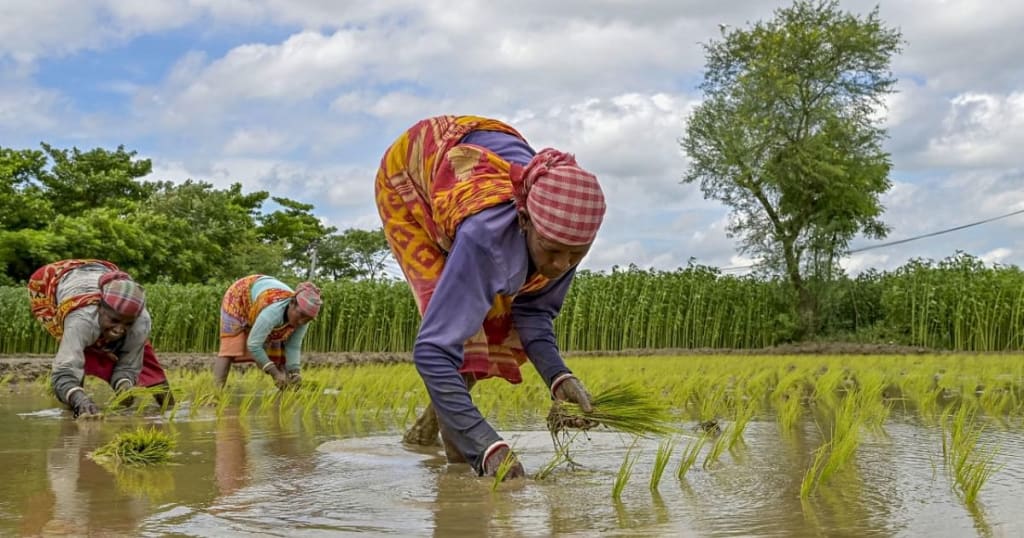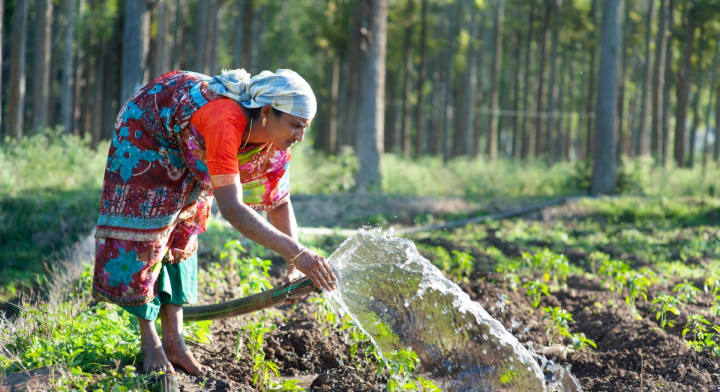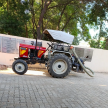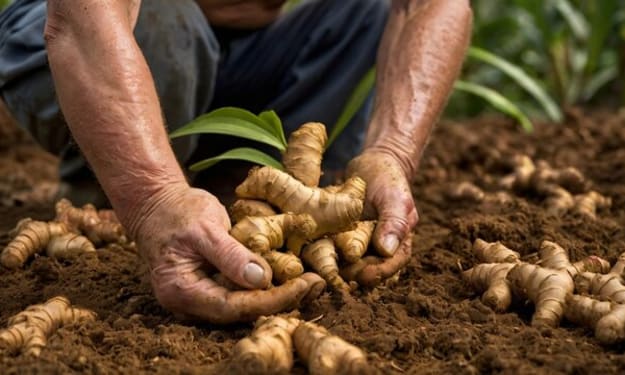Best Practices for Planting and Harvesting Different Crops
Planting & Harvesting : Maximize Your Yield

Cultivating and planting both have their advantages and downsides. Utilizing proper planting and collecting techniques is significant to accomplishing exceptional returns. In this article, we'll talk about the methods you'll need to cultivate your crops effectively.
Soil Preparation
Healthy soil is the foundation of fruitful yields; you might start by testing your soil's pH and nitrogen level. This will help you amend the soil as needed. Fertilizer and compost are natural materials that can improve the efficiency and construction of soil. Properly prepared soil ensures that plants receive the nutrients they require. For soil preparation, farmers can use a tractor attached to appropriate farming implements such as rotavator, disc plough, cultivator, plough, harrow etc.
Crop Selection and Planning
Select the crop that will grow best in your climate and soil. Researching the best breeds in your region can eliminate many problems. Make a planting schedule depending on the local frost date. This will guarantee that crops are planted at the ideal growth period.
Planting Techniques
- Vegetables
Tomatoes: Plant tomatoes in well-drained soil with ample sunlight. Space plants 18-24 inches apart. Stake or cage them to support growth and improve air circulation.
Carrots: Directly sow the seeds in the ground. Thin seedlings to 2-3 inches apart. Carrots need loose, sandy soil to develop straight roots.
Lettuce: Plant lettuce seeds or replacements in spring or early fall. Space them 6-12 inches apart. Lettuce prefers constant moisture and cold temperatures.
- Fruits
Strawberries: Plant in early spring. Keep spacing between plants 18 inches and rows 4 feet apart in well-drained soil. Mulch to stop weeds and hold onto water.
Blueberries: Blueberries require acidic soil (pH 4.5 to 5) to develop. Plant four to five feet apart in sunlight. Add mulch to acidify and drain the soil.
Apples: Select a range of disease-resistant apples. Plant in adequate daylight and all around depleted soil. Plant the trees 15 to 20 feet apart and trim them every year.
- Grains
Corn: To further develop fertilization, plant corn in blocks rather than rows. Plant seeds 30–36 inches out from the row, 8–12 inches apart. Corn needs full light and good, well-drained soil.
Wheat: Plant wheat seeds in the fall for a spring harvest. Ensure the soil is adequately fertilized and has appropriate drainage. Space rows 6-8 inches apart for optimal growth.
Watering Practices

Normal watering is vital for the development of sound yields. Water should be used as soon as possible in the morning to reduce evaporation and prevent diseases. For direct soil watering, use soaker hoses or drip water systems. This reduces the danger of disease by keeping leaves dry and wasting less water.
Mulching and Weeding
Mulching assists in maintaining a stable temperature, weed control, and dampness levels. Leaves, wood chips, and straws are examples of organic mulches that decompose and increase soil richness. Frequent weeding eliminates competition for water and nutrients. Weed management and mulching are crucial for the proper growth of crops. However, if a farmer uses an agricultural implement like Shaktiman Rotavator , Mahindra Rotavator, Sonalika Rotavator or any other rotavator before planting, then using the rotavator can help with weed control in the long run.
Fertilizing
Apply fertilizer to crops according to soil test results. Overfertilization may harm the ecosystem and plants. Natural composts, like fertilizer or excrement, can assist with upgrading your dirt. Slow-discharge composts give supplements over the long haul. Follow specific crop needs for best results.
Pest and Disease Control
Biological, cultural, and mechanical methods combined with integrated pest management provide the most effective control of diseases and pests. Farmers can encourage the employment of ladybirds and predatory beetles, among other beneficial insects. In addition, they can adopt crop rotation to prevent pests and diseases from growing. They should check plants often for indications of problems and take quick action when necessary.
Harvesting Techniques
- Vegetables
Tomatoes: Harvest tomatoes when they are slightly soft to the touch and completely coloured. Keep them out of the fridge to preserve the taste.
Carrots: Pull them after they reach the right size. Frost brings out the sweetness of carrots.
Lettuce: Cut the entire plant or only the leaves as needed. It is ideal to harvest crisp leaves early in the day.
- Fruits
Strawberries: Once strawberries are fully red and beginning to firm up, they are ready to be picked. Harvest crops daily to maintain plant productivity.
Blueberries: Collect the berries when they are completely blue and come off easily. Avoid washing until ready to eat.
Apples: Pick apples when they reach their full colour and easily detach from the tree. Taste one for sweetness before harvesting the rest.
- Grains
Corn: Harvest the corn when it is thick and milky. Check readiness by piercing a kernel with your thumbnail.
Wheat: Harvest wheat when the grains are hard, and the plant turns golden. Cut the stalks and thresh to separate the grains.
Post-Harvest Handling
Proper post-harvest treatment keeps produce fresh and healthy. Store vegetables in a cool, cool place. Freezing is a good method for fruits like apples and blueberries. Grain should be completely dry before storage to avoid contamination and mould growth.
Sustainable Practices
Using sustainable techniques increases agricultural yields over the long run and improves soil health. Crop rotation helps control pests, maintain rich soil, and cover crops to increase soil organic matter and structure. Reduce your exposure to chemicals and, whenever feasible, choose organic approaches.
Conclusion
Timely harvesting, careful management, and proper planning are all necessary to produce a profitable crop. By following these best practices for planting and harvesting a range of crops, you may have a plentiful crop. In addition, you can keep your garden or field healthy and productive.
About the Creator
Mahira Kaur
Hello! I'm Mahira and I have a deep passion for agriculture & farming. My interest lies in exploring innovative agricultural techniques and sustainable farming practices that can enhance productivity and ensure environmental stewardship.
Enjoyed the story? Support the Creator.
Subscribe for free to receive all their stories in your feed. You could also pledge your support or give them a one-off tip, letting them know you appreciate their work.






Comments
There are no comments for this story
Be the first to respond and start the conversation.